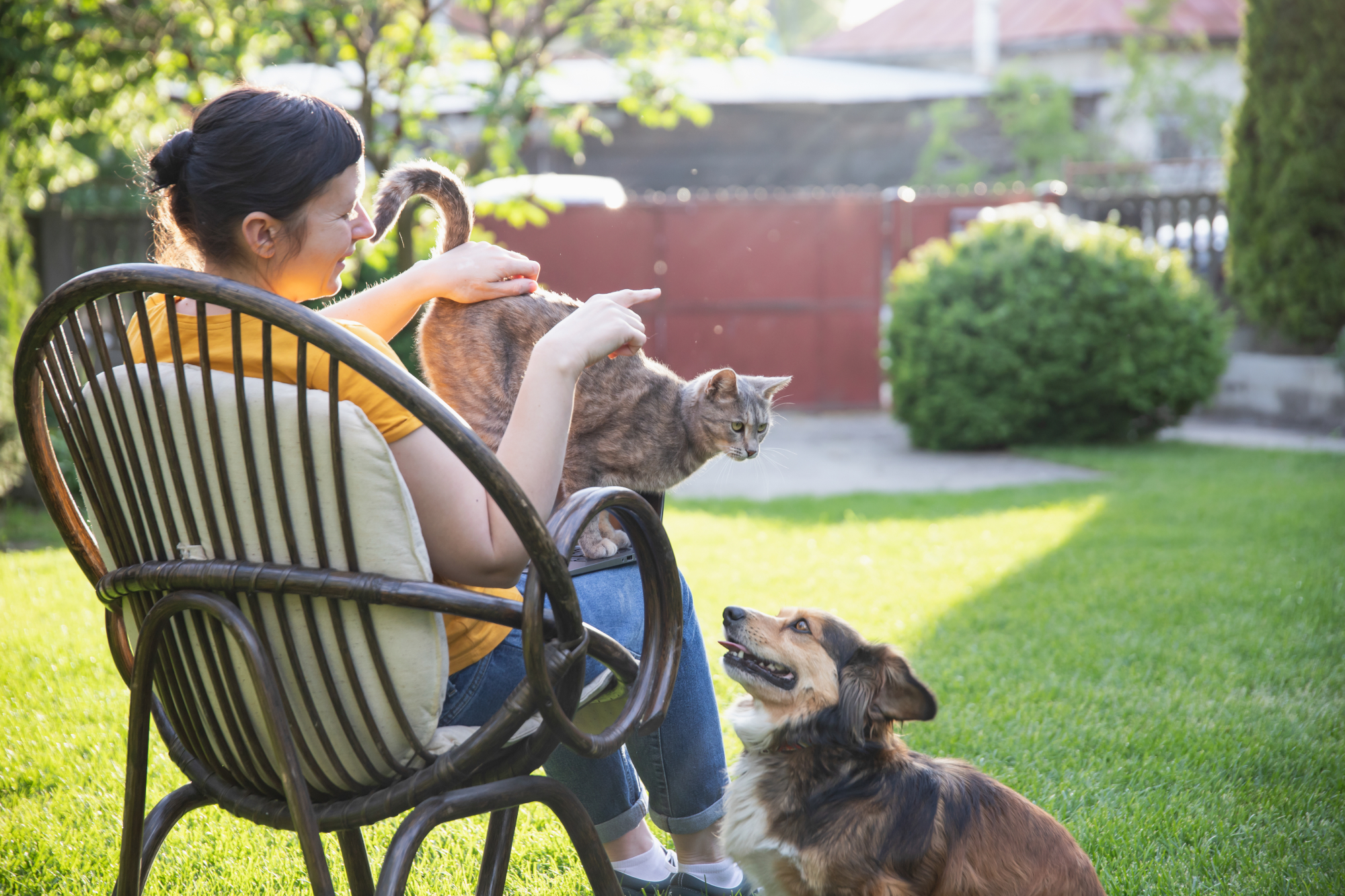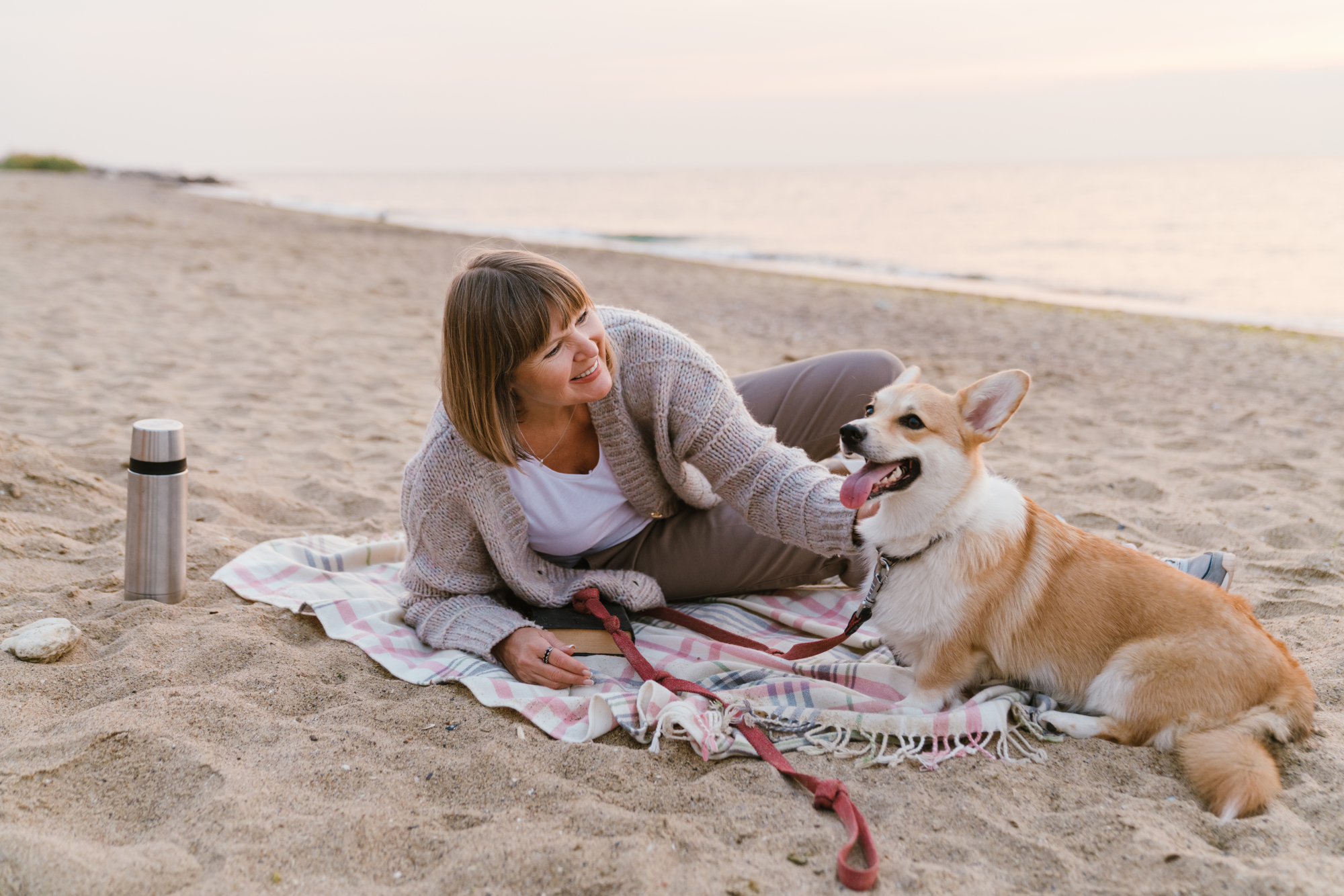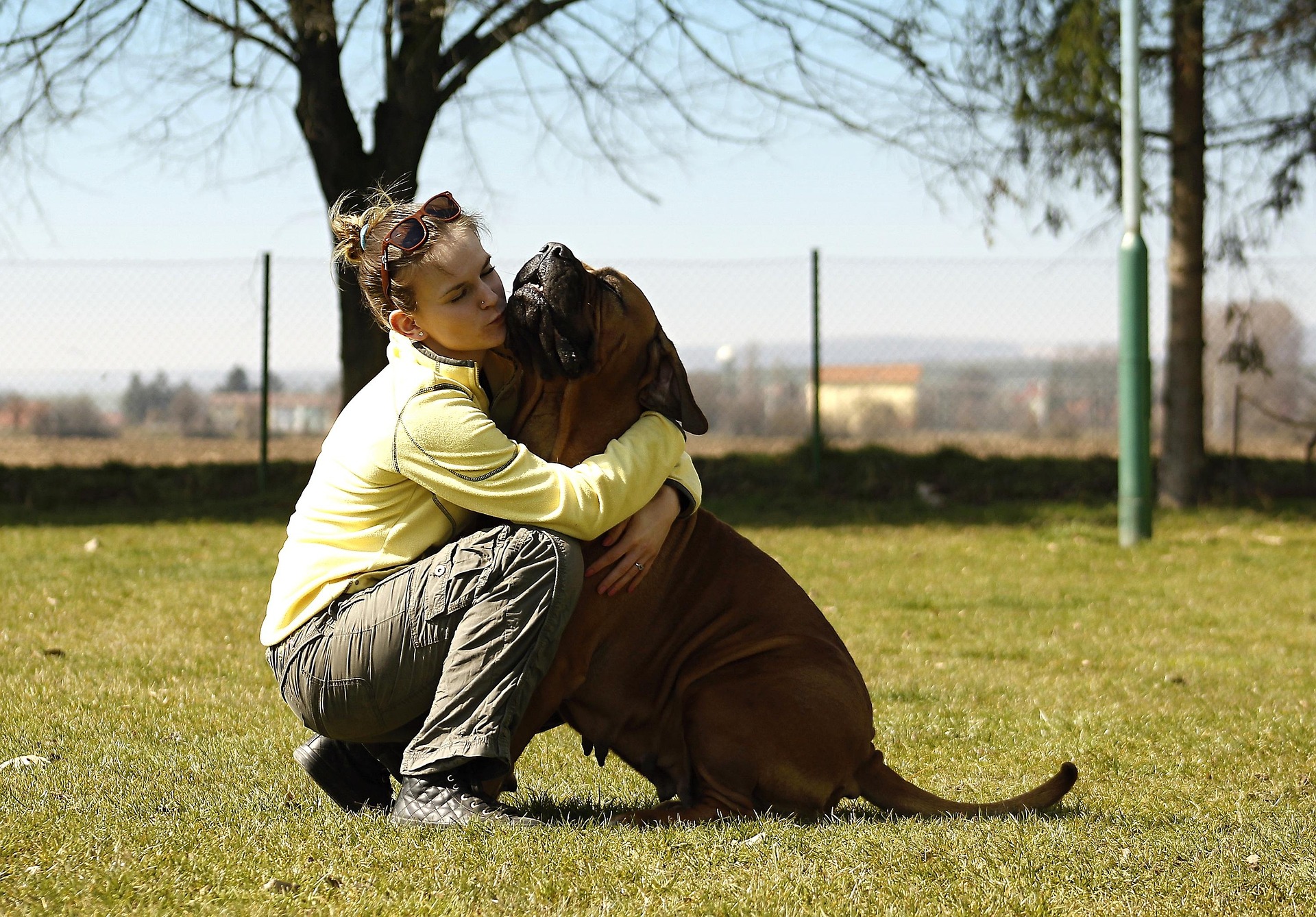If you’re anything like us, when you see a dog, you immediately want to say hello! However, despite their happy nature, dogs aren’t always ready for a pet. Beyond the basics, such as the wagging tail and the beloved head tilt, our canine friends have a whole vocabulary of body language to let you know how they’re feeling.
When it comes to dog body language and whether it’s a good idea to touch a dog, we’d like to split it up like you would a traffic light: green, or ‘go ahead,’ yellow, or ‘use caution,’ and red, or ‘stop!’ Here are some tips on dog body language that indicate all is well versus trouble.
Green Light Dog Body Language
The best time to pet a dog is when it’s feeling calm and relaxed. It’s not feeling stressed out by its surroundings, or confused by what’s going on. When your dog is in a calm, neutral state while standing, it will have a relaxed, centered posture. Its tail will be relaxed or gently wagging, and its eyes may be partly closed, almost as if it’s squinting. When lying down, a relaxed dog will simply look relaxed. Its head will rest on the floor or on its front paws, and it’ll look like it could doze off at any time.
Another positive state for dogs is when they’re feeling playful. This is one of the most commonly understood bits of dog body language. It will bounce into the downward dog position, with its chest to the floor and its rump in the air. This position is referred to as a play bow, and is used by dogs to let you know that any roughness is just play, and not actual aggression. Typically, a dog will only be in the play bow position for a moment, before pouncing or running in a direction. It’s usually safe to pet a dog in this state, but make sure you don’t surprise it, in case it gets frightened.
If you’ve ever walked by your dog with a plate of bacon, this last positive dog body language state is one you’re familiar with. An excited dog is characterized by a quickly wagging tail, forward ears, and an energetic posture that’s ready to pounce. They also may jump up to get the attention of whatever’s got them excited. In some cases, dogs will get overly excited. This can be a concern, especially with larger dogs and smaller children. Overly excited dogs may jump up at people, accidentally scratch you, or even nip at you. This is not aggressive behaviour per se, but it should not be encouraged with your dog.
Yellow Light Dog Body Language
If you’ve ever seen a guard dog, you’re familiar with the alert body language. A dog on alert will have a forward-leaning posture, trying to get closer to whatever’s going on. Its ears will be forward in order to pick up more directional sound, and its mouth may be closed. An alert dog is not always indicative of an intruder or threat. It may simply be interested in what’s going on! If you’re familiar with the dog, make sure to let them know you’re there before giving a reassuring pat.
You’ll most often see dogs assuming a dominant stance around other dogs, although it might take this position around other threats as well. This position is characterized by the dog trying to make itself as big and tall as possible—ears high, tall posture, and usually a raised tail. This dog is asserting itself as dominant around potential threats, and probably does not want to be pet.
An aggressive dog has moved beyond the alert and dominant stances, and is now addressing what it considers to be a direct threat. You’ll know an aggressive dog by its stiff posture, and a steadily waving tail, sometimes described as waving like a flag. Before trying to pet this dog, give it time to assess the threat and enter a more relaxed state.
Red Light Dog Body Language
You’ll know an anxious dog by its posture. When a dog is feeling anxiety, they’ll try to take up as little space as possible. They’ll lean their body back, tuck their ears back on their head, and keep their tail low. If you see a dog behaving this way, it’s likely that it’s uncomfortable or doesn’t know what’s going on. If it’s your dog, help to reassure it that everything is alright with its favourite toys or blankets. If it’s someone else’s, it’s best to leave the dog alone for the time being.
A frightened dog is another behaviour state that many people are familiar with. They’ll have flattened ears and a tucked tail, as well as a crouching posture. This, again, is to make the dog feel as small as possible, allowing it to hide from threats. If your dog is afraid, it may also make whining noises or growls. A frightened dog may also bite in self-defense, so it’s not a good idea to pet it until it becomes more relaxed.
If a dog has faced a threat and decided they can’t win, they may enter a submissive state. This is the dog’s way of saying “I give up, don’t hurt me!” You can tell a dog is in their submissive state if they’re lying on their back, with their paws and tail tucked in close to their body. They will also usually tilt their head back to expose their throat, as well as to avoid eye contact. Some people may think this is the dog asking for a belly rub, but touching a dog in the submissive state could frighten it even more, or possibly cause it to bite in self-defense.
Other Dog Body Language Signs Worth Noting
There are a few other body language clues to let you know a dog is feeling uncertain or nervous. Hackles, contrary to popular belief, are not always a sign of aggression. Similar to goosebumps in humans, they’re an involuntary response triggered by any kind of emotional arousal. Every dog is different, and it’s a good idea to observe your dog and notice when it raises its hackles, perhaps when it meets new dogs or unfamiliar people.
Another sometimes misunderstood behaviour in dogs is yawning. Unlike humans, dogs don’t usually yawn when they’re tired, but rather when they’re in stressful situations. Yawning helps to calm the dog, and it may also yawn to calm others, such as its owner. Take note of when your dog yawns, and you may notice a pattern, helping you to understand what situations your dog finds stressful.
The final behaviour worth noting is what’s referred to as ‘whale eye’ by dog trainers. Whale eye is when a dog averts their head slightly, but keeps their eye fixed on a point, allowing you to see the whites of their eyes. This behaviour lets us know that a dog is feeling uncomfortable or anxious, and that it doesn’t want to be pet. If you see a dog doing the whale eye, hold off on petting it until it becomes more relaxed.
Keeping Your Dog Comfortable
If you’re a dog owner, it’s important to pay attention to your dog and learn what it’s trying to say through its body language and other physical cues. Learn their habits, their comforts and stressors, as well as what their neutral body posture looks like. While this general guide on behaviour states is a great starting point for learning about dog body language, it’s no replacement for getting to know your dog and all its quirks. The more you’re able to interpret your furry best friend’s body language, the happier they’ll be, and the more comfortable they’ll be with you.
When deciding whether to say hello to someone else’s dog, the above information is a great start to understanding how it’s feeling. However, only their owner will really know what kind of mood they’re in, and whether it’s a good idea to interact with the dog. That’s why it’s so important to always ask before petting a stranger’s animal. Doing so not only keeps you physically safe, but also ensures the comfort and happiness of the animal.
If you have any more questions about dog behaviour, or anything pet-related, don’t hesitate to give us a shout at Hastings Veterinary Hospital!
Creative Commons Attribution: Permission is granted to repost this article in its entirety with credit to Hastings Veterinary Hospital and a clickable link back to this page.






